Made from materials that change over time, products by Japanese brand Picus are designed for everyday use, and to evolve with their owners. The brand's creations have an aesthetic that is both ancient and modern, and it's not for nothing that they are affectionately nicknamed "antiques of the future" by their creator Masayuki Honami.
Among the many products marketed by the brand, the range of key rings is particularly interesting. Their original design, reminiscent of old hotel room keys or luggage tags, makes them perfect accessories for personalizing everyday objects. Luggage tag" key rings, for example, look great on a Traveler's notebook.
The creation of the Picus brand
Founded in 2009 in Tokyo by Masayuki Honami, the brand likes to create modern products by taking design inspiration from old objects that have fallen into disuse and giving them a whole new function.
Masayuki Honami's idea to bring these old objects up to date came to him on his honeymoon in England.
As he wandered around London's flea markets, he realized that people still had a keen interest in these old objects, and that they had lost none of their charm despite the passage of time. From this trip, he brings back an old typewriter, which he uses to make objects such as bookmarks, using the machine's keys. Before creating his own brand, Masayuki Honami worked for a company that sold a variety of everyday objects. It was through this work that he was able to learn more about the trade and build up a list of contacts to gain access to factories to create the very first Picus objects.
The brand's objects
Since Picus' first creations in 2009, the brand has expanded its catalog to include items as diverse as pen cases, clipboards, brass boxes, card cases, brass trays, pen holders, herbariums and incense holders.
What they all have in common, however, is that they are designed for everyday use, with a simple aesthetic that brings old objects up to date.
These "antiques of the future" are made from materials that evolve over time, such as brass, copper, leather and wood. Brass, for example, is a material that develops a patina over time, meaning that a layer of brown color is created on its surface due to oxidation. Just touching a product made of brass triggers this natural process that gives it so much cachet.
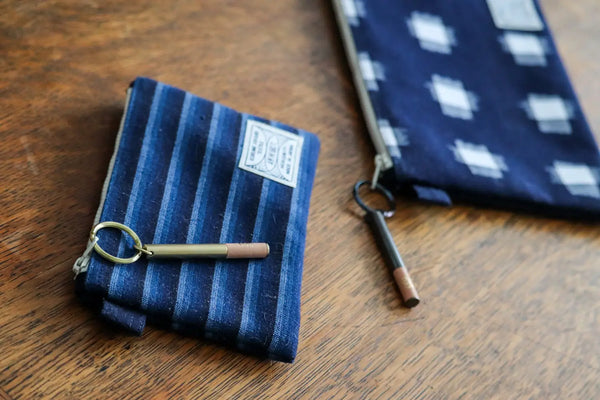
As these materials are very different, they are not produced in a single factory, but by craftsmen specialized in these fields. For example, the coloring of the brand's retractable pens is done by hand in a workshop in Takaoka (Toyama prefecture), a city with a strong industrial past, specialized in copper and lacquer, so each pen has its own unique pattern.
For this reason, Picus items are not produced in very large quantities. All the more so as, even with the help of machines, the objects have to be assembled by hand. To keep pace with their owners, Picus products are highly resistant and designed for everyday use. The brand's creator hopes that contemplating the marks left by daily use on these objects will bring back precious memories for each owner. They are also timeless objects: no matter how much time passes, their charm will never disappear. It's not for nothing that they're inspired by a variety of antique objects, which always attract just as many people to flea markets.
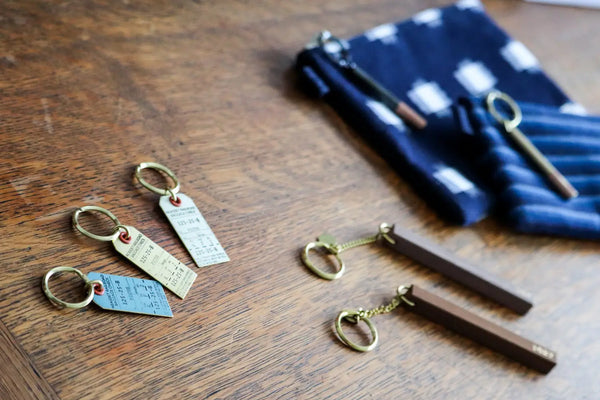
Picus key rings
The brand's flagship products include a magnificent range of key rings. As their name suggests, these objects can be used as simple but elegant key rings. However, it's just as possible to divert these objects from their main function, by letting your creative side do the talking...
-Wooden "hotel room" key rings
Made from wood and brass, their design is reminiscent of the key rings on which keys were hung in ryokan, the traditional Japanese inns. These key-rings feature numbers stamped in gold leaf, recalling the room numbers of these establishments. Although available in different colors, these key rings are not painted, but simply varnished. The different colors depend on the type of wood used. For example, key rings bearing the number 105 are made from cherry wood, those bearing the number 307 from walnut wood, and those bearing the number 1027 from merbau wood. It's up to the buyer to choose which number and which material inspire him or her most.
While this key-ring looks great on a bunch of keys, as a reminder of its original use, it also makes a beautiful decorative object. Hang it on a hook, for example, to subtly decorate a white wall.
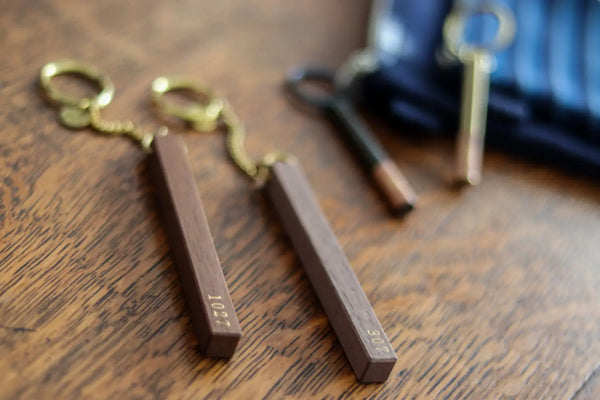
-Hotel room" key rings in brass and leather
Made of brass and cowhide, a material that also evolves over time, these key rings have a cylindrical shape that makes them easy to hold. They are also numbered (635, 701 and 829) and, depending on their number, have a different color.
Thanks to their small size and cylindrical shape, these key rings are perfect for hanging on the slider of a zipper: the part used to open or close the zipper. For example, they can be attached to the sliders of Okamoto Shoten brand pouches to accessorize them. This makes them as elegant as they are practical.
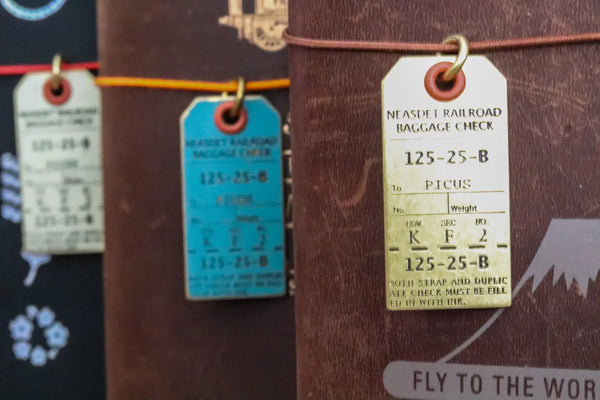
-Brass "luggage tag" key rings
Made from brass, these key rings take us right back to the early days of train travel, when these tags were attached to travelers' large leather suitcases... Each key ring is based on the motif of an old luggage tag, reproduced on a cast plate. Although the design is based on an old tag, these key rings are both modern and elegant.
They are available in ash-green, beige, rust, natural (black or natural writing) and feature a brown brass eyelet. Like the objects they're inspired by, these luggage tags can be hung from a travel bag or suitcase, but they're also perfect for accessorizing a Traveler's notebook...
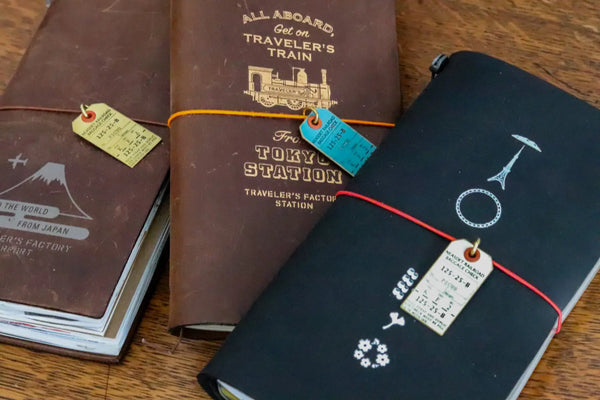
Accessorize your Traveler's notebook
Traveler's notebooks are customizable travel journals with a cover made from vegetable-tanned cowhide, reminiscent of the travel journals used by the great explorers and travelers who set out centuries ago to discover new horizons and cultures. This travel journal closes with an elastic band that can be personalized with a small accessory. There are plenty of objects that can fill this role: it can be an object with sentimental value, an object linked to one's passions, or an object that simply suits one's taste.
For example, in keeping with the travel theme, Picus luggage tag key rings are perfect for accessorizing a Traveler's notebook. The two products complement each other perfectly, because although marketed by two different brands, they are both intended for everyday use, to keep track of the passing of time. While the Traveler's notebook cover will gradually become covered in scratches, the paint on the key rings will peel off in places.
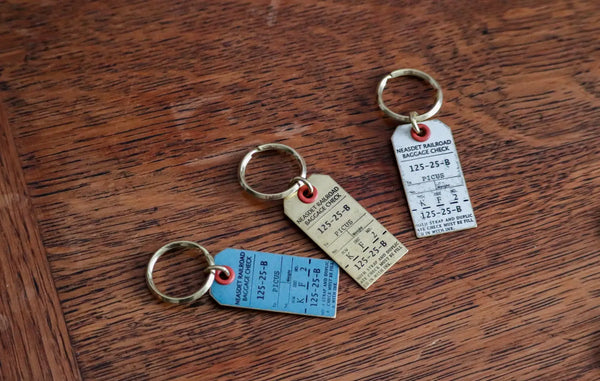
Personalizing your Traveler's notebook with these key rings couldn't be easier. Simply slide the key ring, with or without the ring, through the elastic band that closes your Traveler's notebook. These key rings are just the right size to match the aesthetics of the Traveler's notebooks. What's more, you can choose the color of the elastic band to create a notebook that's 100% your own.
As you can see, the Picus range of key rings is ideal for accessorizing and personalizing a variety of everyday objects. Their original design, inspired by ancient objects, makes these key rings particularly elegant and endearing. They're perfect objects that will stay with you for many, many years. Masayuki Honami, the creator of the Picus brand, can't wait to see what these objects will look like decades from now.

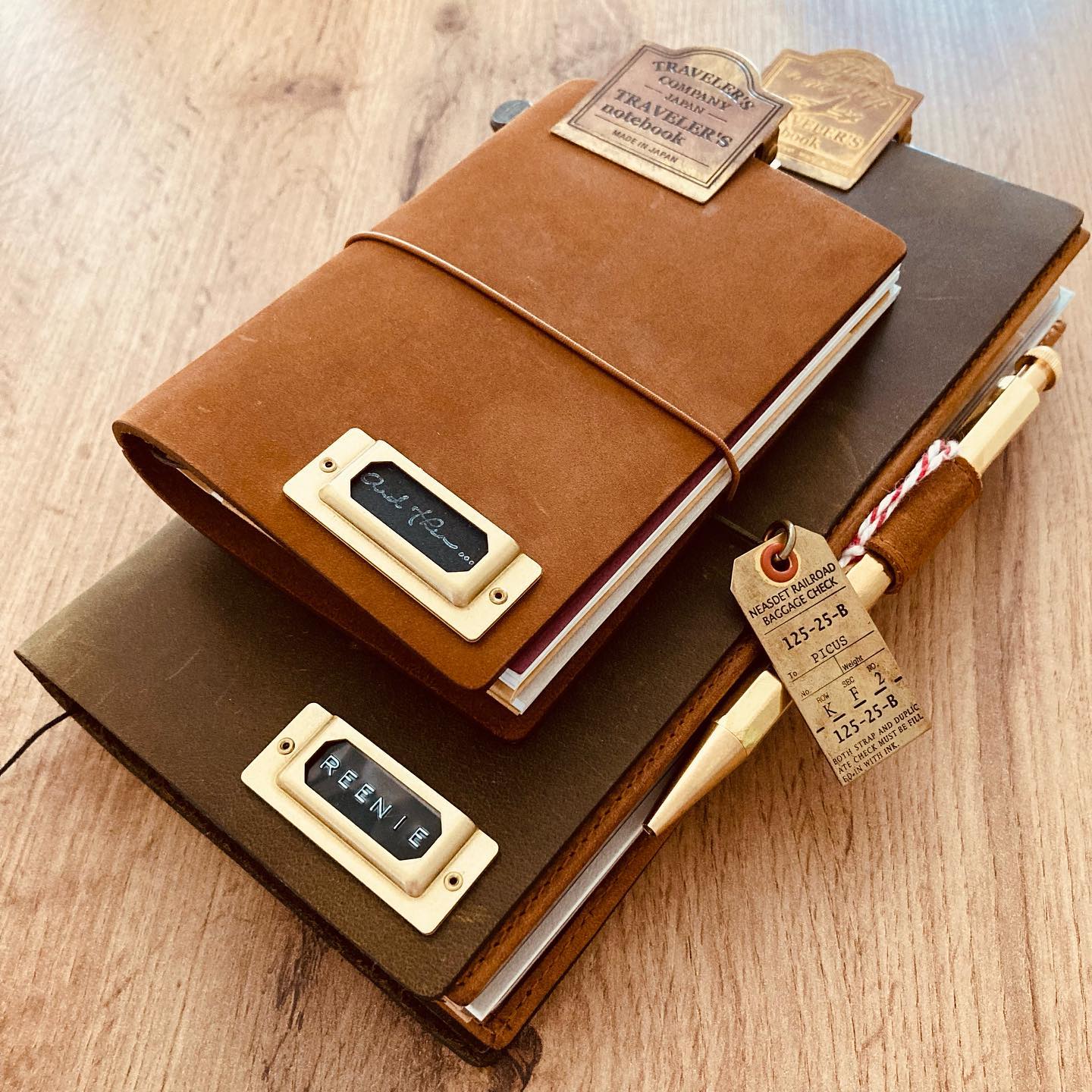
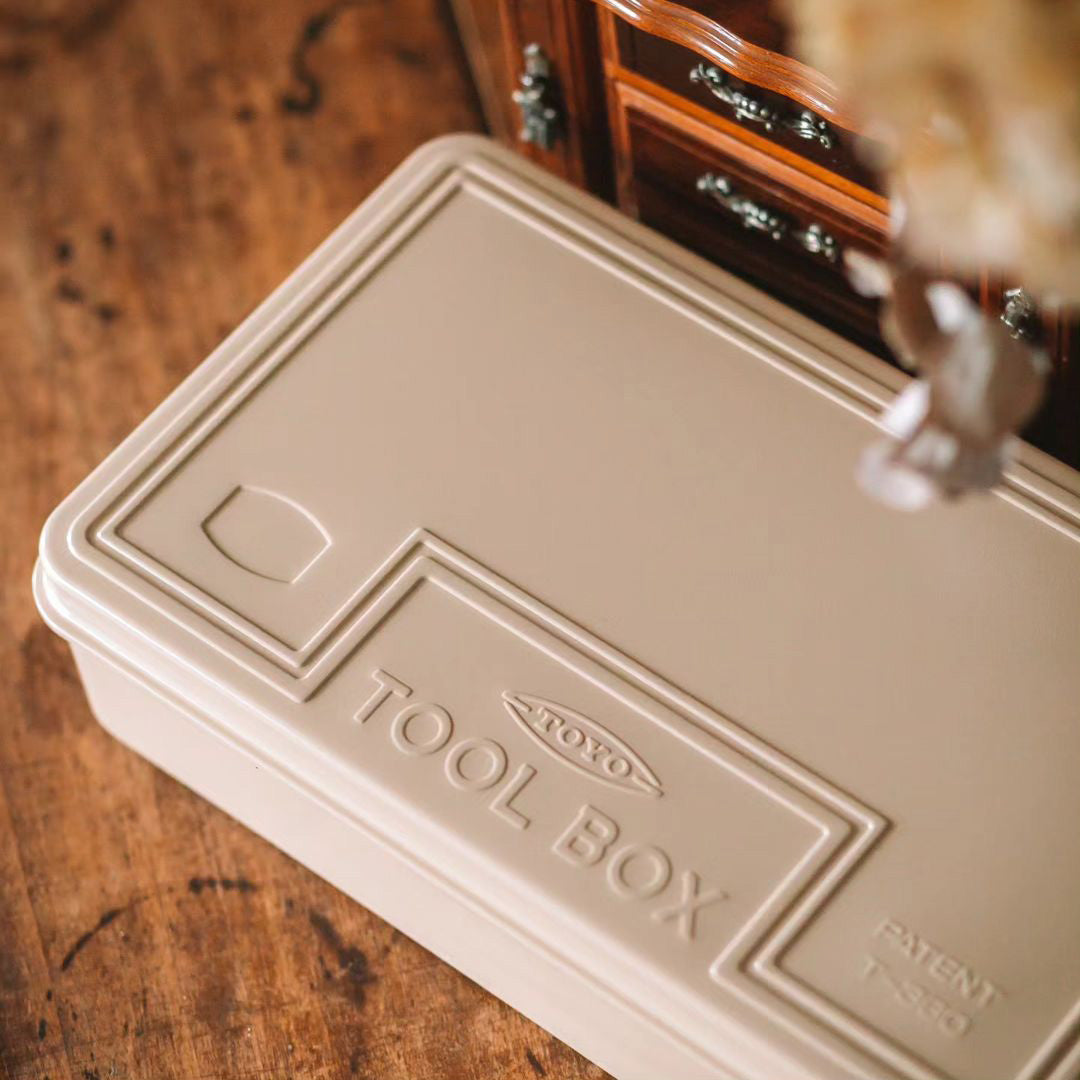
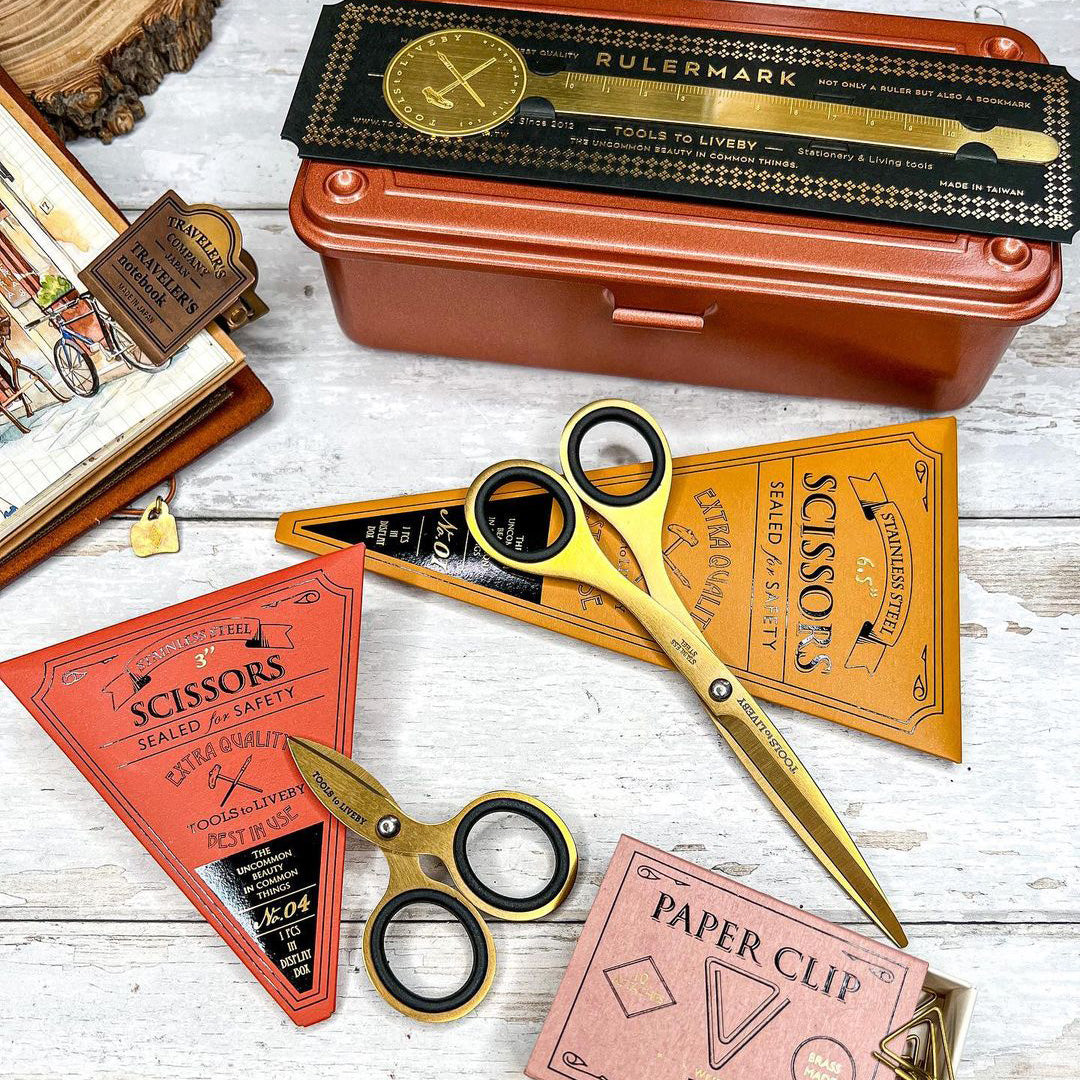
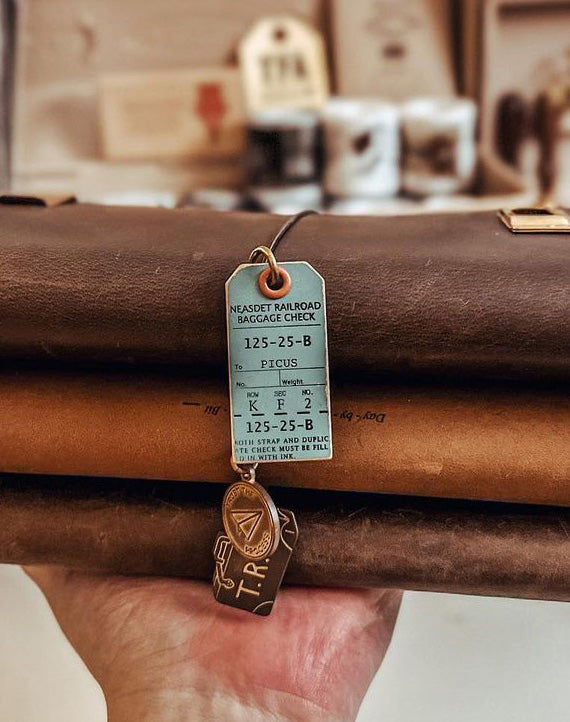

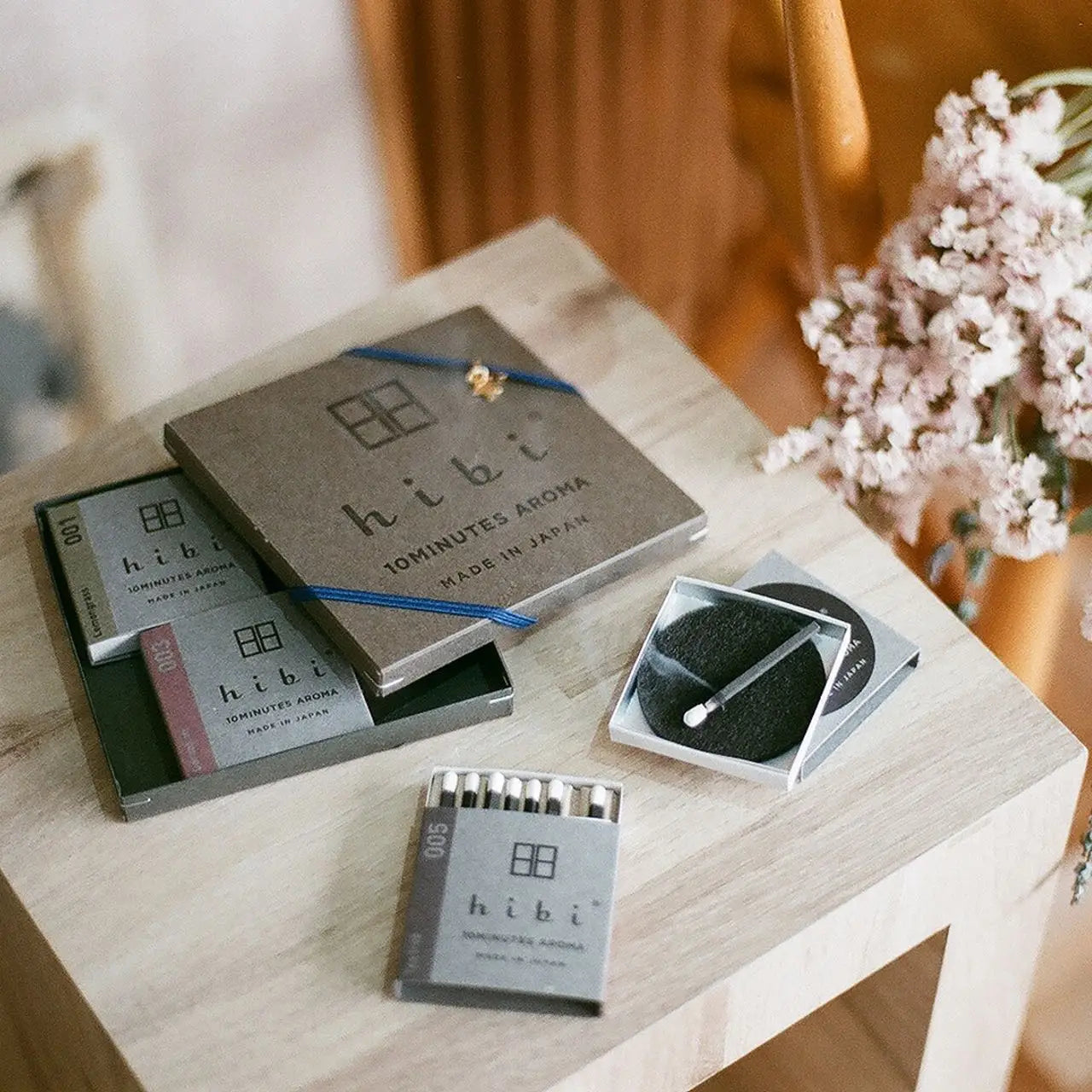
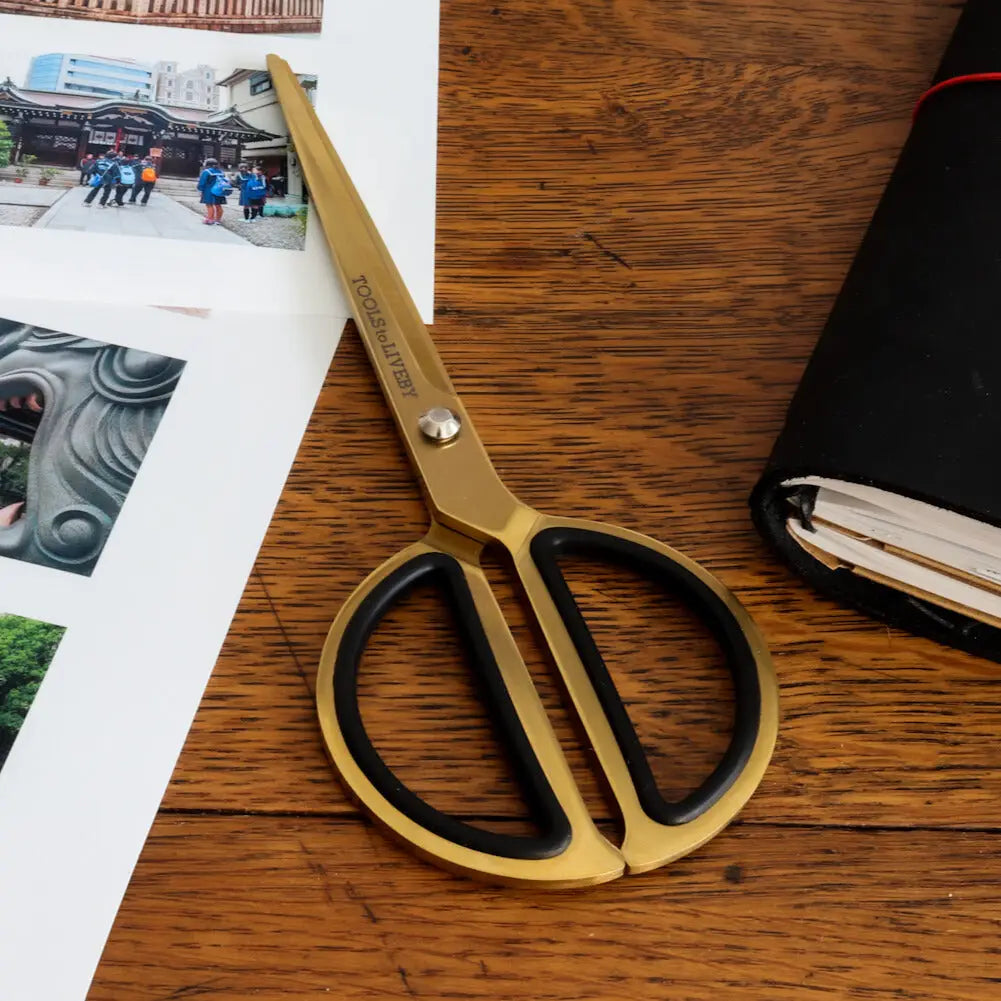
Leave a comment
This site is protected by hCaptcha and the hCaptcha Privacy Policy and Terms of Service apply.